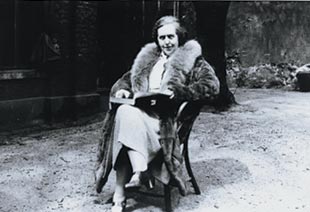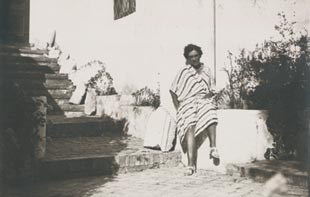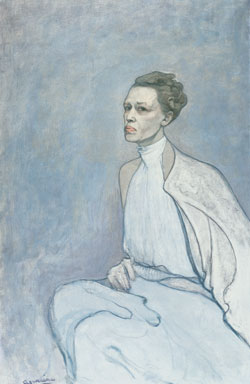Natalie Clifford Barney arrived in Paris in 1902, and unlike many expatriates who eventually returned to their home countries, she stayed there until her death in 1972. Barney had a near-native command of French, which enabled her to write several volumes of poetry and prose in French throughout her life. That her works went untranslated for many years is one reason why her writing has not been read by English-speaking audiences.
Barney was perhaps most well known for her charm and charisma, as well as for the decidedly female-centered salons she hosted on Friday nights for some sixty years. Barney was a notorious seductress and a celebrated lover, and love affairs with her were considered “a rite of passage not uncommon among attractive female arrivals in Paris at that time.”1 Although Barney also entertained men at her salon, the Friday night meetings at her home and garden at 20 rue Jacob were intended to revive the spirit of Lesbos in modern Paris. As at other salons, Barney’s evenings included musical performances, poetry readings, and intellectual conversations; unlike other salons, they included performances of Sapphic rituals and celebrations of Greek goddesses. Although Barney’s salon is not as well known today as that of Gertrude Stein, at that time invitations to both salons were equally coveted by American visitors. Stein’s salon has received a great deal of attention from historians and scholars, while Barney’s was neglected for many years.
In 1915, Barney met Romaine Brooks, a painter and fellow expatriate who became her partner for over 50 years. While Barney craved a full social life, Brooks was shy and quiet, preferring to be alone painting or spending time with Barney. Brooks painted several portraits of the women in her circle, and she was well known for her ability to capture the spiritual essence of her subjects. Her portraits were so haunting that she was sometimes referred to as the Thief of Souls.







